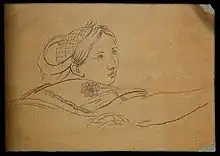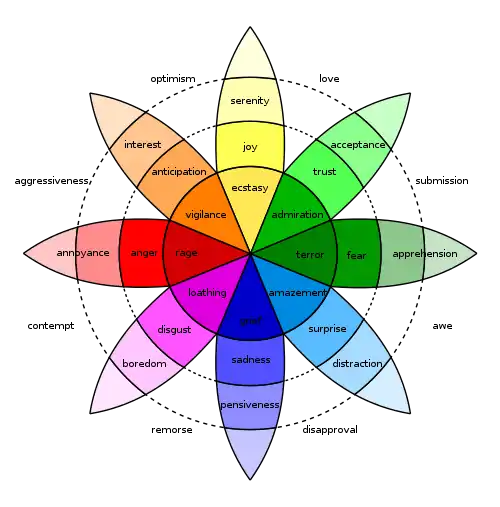Pathognomy
Pathognomy is the formal study of passions and emotions, as expressed by the voice, gestures and facial expression.[1]
Pathognomy is distinguished from physiognomy based on key differences in their features. The latter, which is concerned with the examination of an individual's soul through the analysis of his facial features,[2] is used to predict the overall, long-term character of an individual while pathognomy is used to ascertain clues about one's current character. Physiognomy is based on shapes of the features, and pathognomy on the motions of the features. Furthermore, physiognomy is concerned with man's disposition while pathognomy focuses man's temporary being and attempts to reveal his current emotional state.[3]
Johann Kaspar Lavater separated pathognomy from physiognomy to limit the so-called power of persons to manipulate the reception of their image in public.[4] Such division is marked by the disassociation of gestural expressions, and volition from the legibility of moral character.[4]
References
-
- "Pathognomy". Segen's Medical Dictionary. 2011. Retrieved October 1, 2020 – via TheFreeDictionary.
- "Pathognomy". Merriam-Webster.com Dictionary. Merriam-Webster. Retrieved October 1, 2020.
- Jandl, Ingeborg; Knaller, Susanne; Schönfellner, Sabine; Tockner, Gudrun (2018). Writing Emotions: Theoretical Concepts and Selected Case Studies in Literature. Bielefeld: transcript Verlag. p. 236. ISBN 9783837637939.
- Knapp, James A. (2016-03-03). Shakespeare and the Power of the Face. Routledge. ISBN 9781317056379.
- Lukasik, Christopher J. (2011-07-11). Discerning Characters: The Culture of Appearance in Early America. Philadelphia: University of Pennsylvania Press. p. 30. ISBN 9780812242874.


